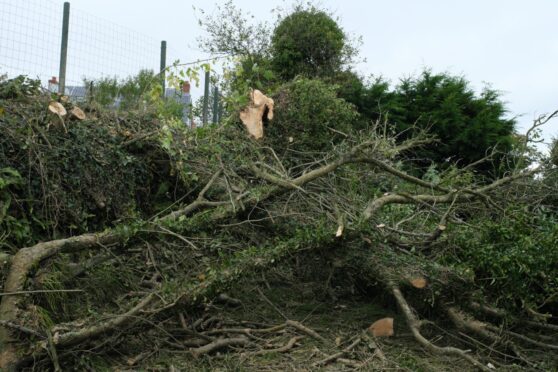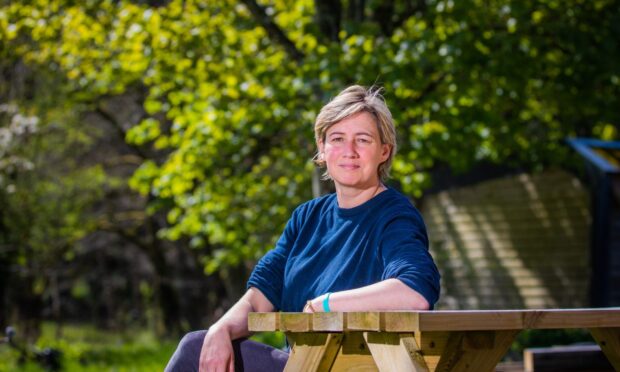Our fearless reporter Jamie Buchan was invited to join a team investigating spooky goings-on at Cultybraggan near Comrie at the weekend. Here he reflects on the experience…
“Was that you, spirit?”
The machine on the table lights up again.
“Thank you, spirit,” says historian Sheila Walsh. “Could you please light up another device, the one on my right?”
Silence. The same device – a meter that detects electro-magnetic frequencies – lights up again. I edge closer to the table.
“Very good, thank you, spirit,” says Sheila. “Are you happy with us being here?”
More silence. I move closer for a better look. Two devices light up, brighter than before.
A chill comes over me. I realise I’ve left my mobile phone on in my pocket, after being told to switch it to aeroplane mode.
Sheila is part of the Scottish Ghost Nights team, investigating spooky goings-on at Cultybraggan Camp on the edge of Comrie, Perthshire.
During World War Two, the camp held 4,000 category A prisoners, some of the nastiest and most fanatical Nazis ever captured on British soil.
The team kindly allowed The Courier to join its investigations at the weekend. The event is part of the world’s largest ghost hunt, a record-breaking attempt to link paranormal explorations from all corners of the globe.
Cultybraggan Camp, with its network of Nissen huts, turns out to be an ideal spot for ghost hunting. At the start of the night, the team gather in one of the tunnel-shaped steel structures, along with about 40 pre-booked guests while the wind howls outside.
If you’ve seen the TV series Most Haunted, you know the drill. Torch-lit tours through darkened rooms, and occasional pauses as investigators try to work out what just made a noise.
Lead investigator Lisa Tedstill, who has been ghost hunting since she was five, says the real thing is quite different.
“People are very surprise to find it’s not like ghost hunting shows on TV,” she said.
“When they do filming, they spend a lot of time on locations and the final show is edited right down.
“They won’t show you the long periods of time, sat in the dark doing nothing.
“But what they can’t capture on those shows is the personal experience that people have. It’s not unheard of for someone who, maybe someone who’s not very emotional, to walk into a place and just start crying.”
Split into three groups, we make our way around the camp with Sheila and psychic Natasha Girdwood.
We return to the officers’ mess, where the EMF devices had lit up earlier in the evening.
Natasha says she detects the spirit of a young coal delivery boy, who is “probably the cause of a lot of mischief around here.”
We pause when some of the group say they heard a popping sound. I heard it too, but I thought it was me stepping backwards on to someone’s bag.
People say they thought the noise came from the other end of the room, perhaps near the old bar area.
Throughout the night, things happen that could be spirits from another realm trying to reach us. Or they could be entirely ordinary things that just happened.
A chair with sinister looking straps appears to have moved across a room. A hut locks itself. One of the group senses a man walking back and forth in front of him.
During a patience-testing Ouija board session in one of the huts, a torch on a nearby table lights up on its own.
We start asking questions and it appears to respond. The spirit tells us it is happy with us being in the hut and it tells us it is originally from Ireland.
“Are you a man?” one guest asks. No response. “Are you a woman?” Nothing. There’s an awkward silence, followed by “Are you a dog then?”
Our spirit seems to have left us.
At the start of the evening, which continues on until 2am, Lisa tells the crowd: “This is purely for entertainment purposes. We cannot guarantee you have a paranormal experience.”
I’m not sure if I did have a paranormal experience. I might have done, and just not realised. But it was certainly entertaining.











